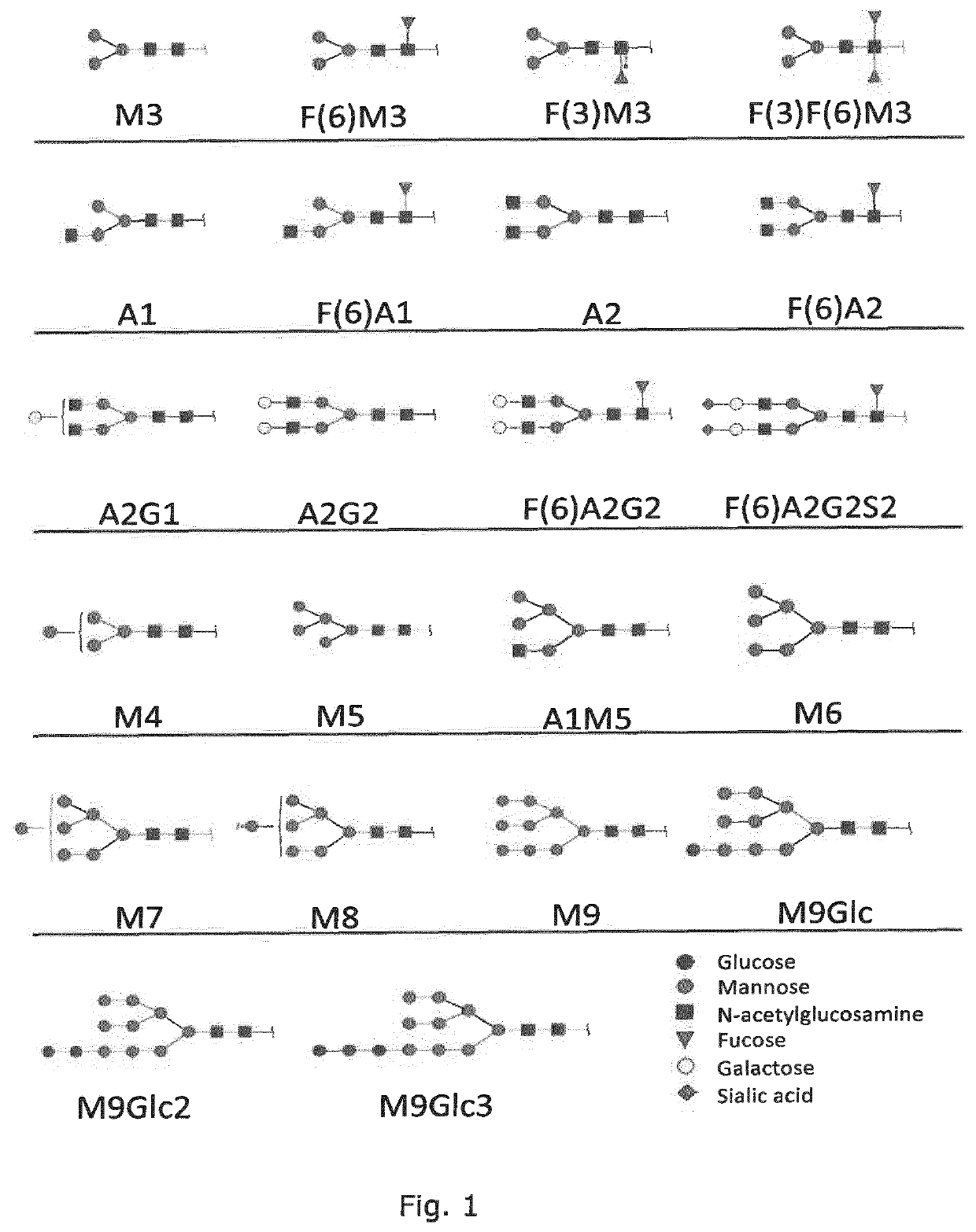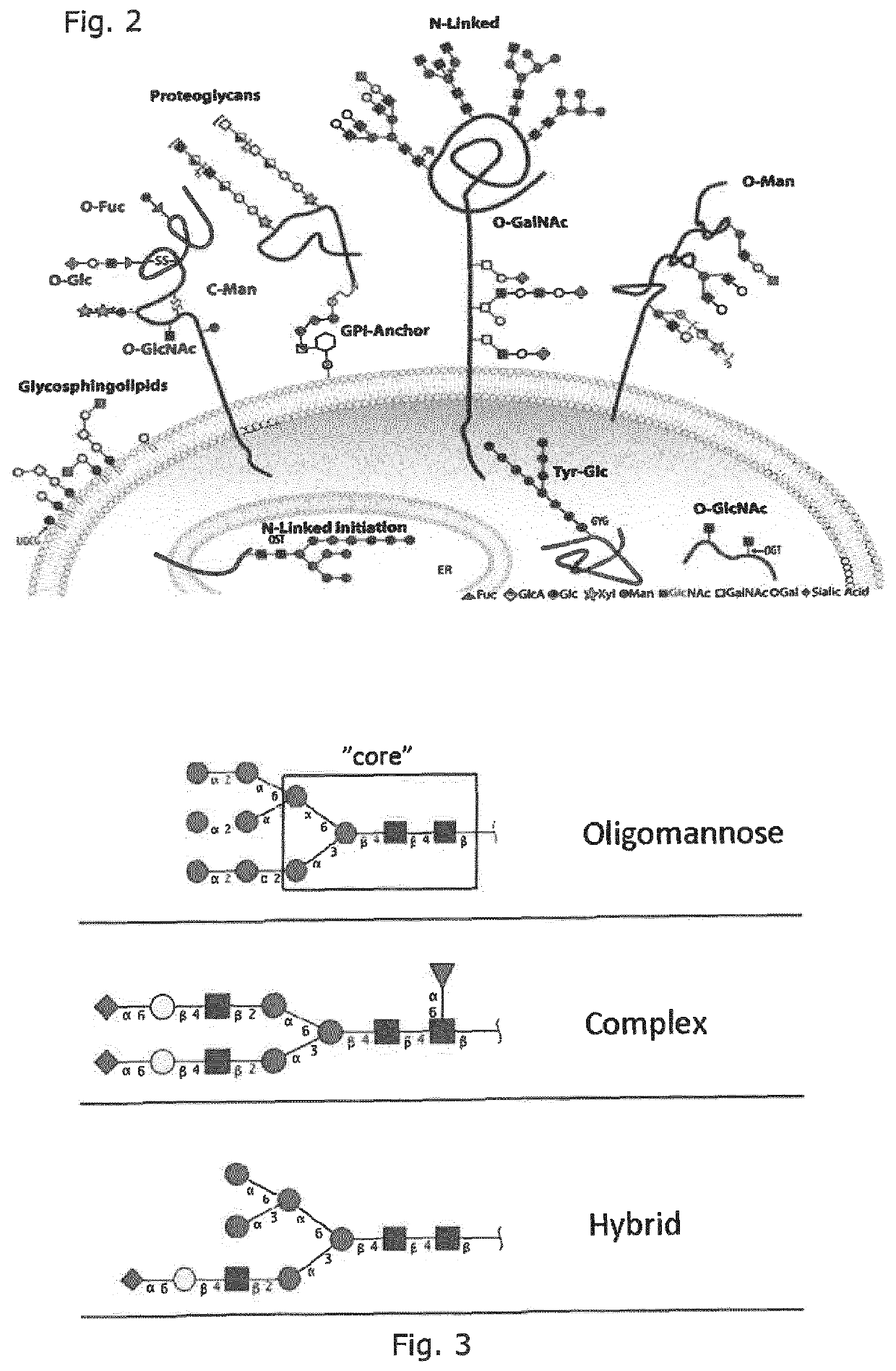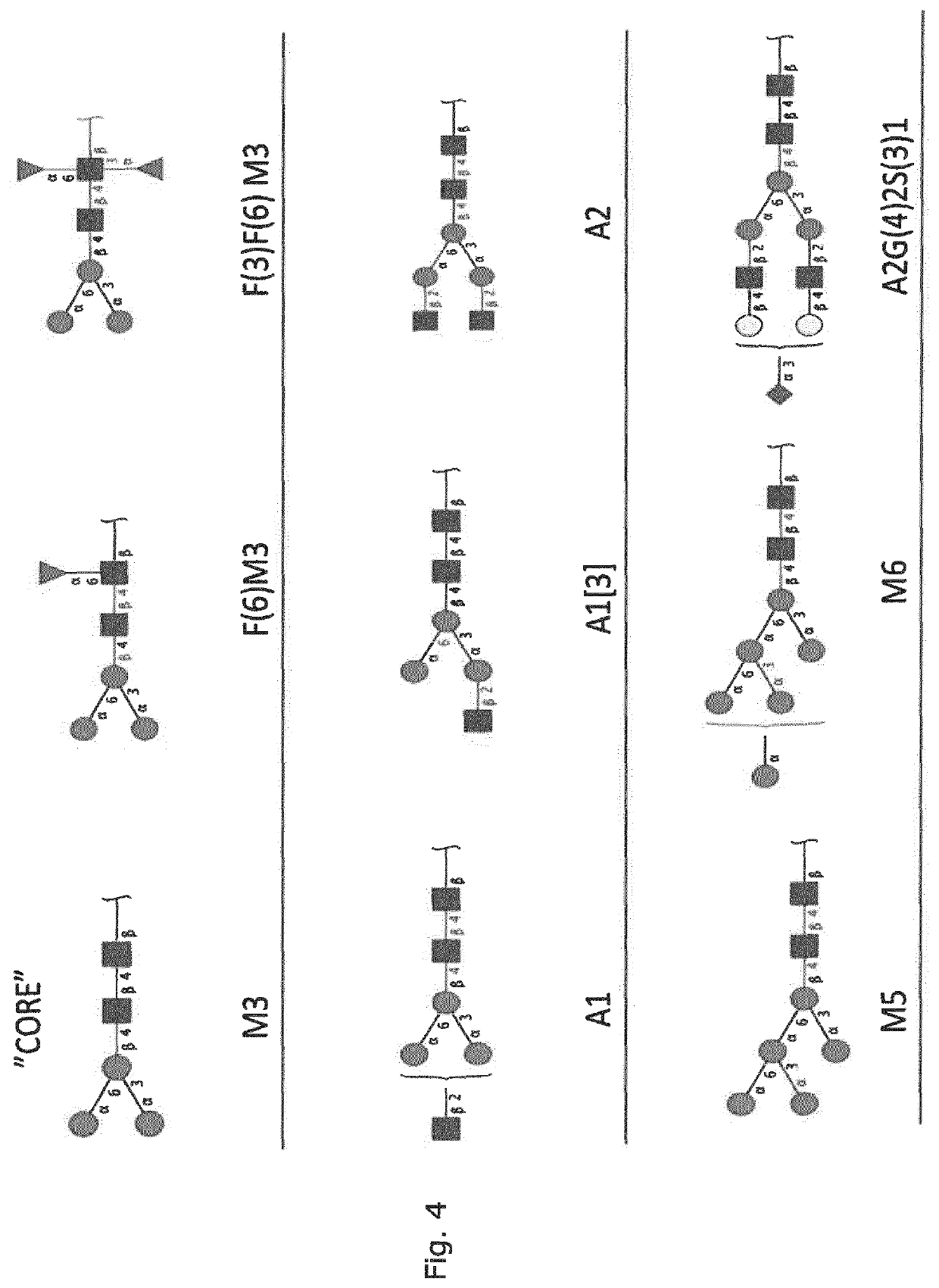Production of protein with humanized n-glycosylation in insect cells
a technology of n-glycosylation and insect cells, applied in the field of recombinant protein production in insect cells, can solve the problems of inability to produce a single protein, so as to reduce or even abolish the immunogenicity
- Summary
- Abstract
- Description
- Claims
- Application Information
AI Technical Summary
Benefits of technology
Problems solved by technology
Method used
Image
Examples
example 1
[0212]Preparation of “Humanized” S2 Cell Lines
[0213]Plasmid Construction
[0214]The online E-CRISP tool (www.e-crisp.org; German Cancer Research Center) was used to identify CRISPR / Cas9 sequences within the Drosophila melanogaster genome that target fdl (UniProt: Q8WSF3) and FucT6 (UniProt: Q9VYV5). sgRNA target sequences were selected as 20 nt sequences preceding an NGG PAM sequence in the genome. The oligonucleotide pairs XX-F and XX-R were used to construct DNA fragments consisting of each targeting sequence with overhangs to enable their subcloning into pExpreS2-CRISPR (ExpreS2ion Biotechnologies, Hørsholm, Denmark).
[0215]The sequences of the synthetic oligos are as follows:
NameSequence of oligoFdl3-FTTCGCGGCGCAGCGATACAGCCA(SEQ ID NO: 1)Fdl3-RAACTGGCTGTATCGCTGCGCCGC(SEQ ID NO: 2)Fdl12-FTTCGCTGGGCCTTGGTGACTCCT(SEQ ID NO: 3)Fdl12-RAACAGGAGTCACCAAGGCCCAGC(SEQ ID NO: 4)FucT6_TTCGTATCGCCGATCGAGTTGGCC36-F(SEQ ID NO: 5)FucT6_AACGGCCAACTCGATCGGCGATAC36-R(SEQ ID NO: 6)FucT6_TTCGAGTTAATTGAG...
example 2
[0249]G2F Cell Line (Biantennary Galactose)
[0250]S2 cells transfected with ExpreS2 vector harboring gene encoding Cas9 and guide RNA targeting fdl (knockout of β-N-acetylhexosaminidase, G418 selection), genes encoding N-acetylglucosaminyltransferase I and N-acetylglucosaminyltransferase II (Drosophila Mgat1 and Mgat2, puromycin selection). This polyclonal cell line has been cloned by serial dilution resulting in cell line with ca 65% biantennary GlcNAcs (G0, data already submitted for initial filing).
[0251]This monoclonal cell line was transfected with bovine β-1,4-galactosyltransferase 1 from Bos indicus (B4GT1, accession number XP_019821962) and the one from human (B4GalT1, NP_001488) where CTS (cytoplasmic / transmembrane / stem) domain was exchanged for the one of human FUT7 gene CTS (Genbank accession number NP_004470, amino acids 1-48) as done by Geisler et al. (2014) in ‘Engineering β-1,4-galactosyltransferase I to reduce secretion and enhance N-glycan elongation in insect cells’...
PUM
| Property | Measurement | Unit |
|---|---|---|
| density | aaaaa | aaaaa |
| density | aaaaa | aaaaa |
| concentration | aaaaa | aaaaa |
Abstract
Description
Claims
Application Information
 Login to View More
Login to View More - R&D
- Intellectual Property
- Life Sciences
- Materials
- Tech Scout
- Unparalleled Data Quality
- Higher Quality Content
- 60% Fewer Hallucinations
Browse by: Latest US Patents, China's latest patents, Technical Efficacy Thesaurus, Application Domain, Technology Topic, Popular Technical Reports.
© 2025 PatSnap. All rights reserved.Legal|Privacy policy|Modern Slavery Act Transparency Statement|Sitemap|About US| Contact US: help@patsnap.com



